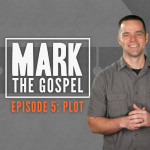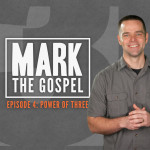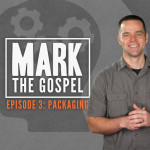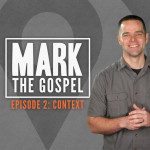So I’ve hinted at this over the last few episodes, but it’s time I come out and say it. Mark is the first-century equivalent of a modern day movie. By that, I don’t mean fiction. I mean Mark recounts Jesus’ ministry in the same way today’s filmmakers typically tell true stories. Working in a remarkably similar venue (something we touched on in Episode 3), Mark has, in fact, stretched historic events over the same structural canvas still used today.
Think of what you know about movies. While characters and settings change, movies share a sequencing of events which is remarkably similar; Five basic plot points divide three structural acts.
We can refer to these points as the inciting incident, the lock-in, the midpoint or first culmination, the second culmination and the third act twist.
When a film opens, we’re introduced to a status quo. But an incident soon occurs which challenges a hero and sets the plot in motion. Within several film minutes, the challenge grows to a point where the hero can no longer ignore it. The hero takes on the problem, setting a new course of action.
This new course of action makes up the second act. Here, the hero faces one obstacle after another, the struggle mounting until the midpoint where they seem about to achieve their goal. But then everything falls apart. And they’re forced to start over again.
Act 2 ends with a hero’s major success or failure. This propels them to a new goal and creates a new tension for the final act. Here the story reaches its maximum tension between forces in opposition. And the hero faces their ultimate test. Finally, in the third act twist, the story is resolved, leading to a brief period of peace at the films end.
Now let’s look at what we’ve learned about Mark so far. In the last episode, I noted the parallels between Jesus baptism, transfiguration, and crucifixion. These three scenes act as signposts to Mark’s larger organization and message. The links between the baptism and crucifixion make up Mark’s major sandwich, tieing the story’s end to its beginning. While their connection to the transfiguration, in the middle, bisects the book into two major halves.
It’s not by accident that the transfiguration follows so closely after Jesus’ partial healing of the blind man (an incident we looked at in Episode 2). This is Mark’s midpoint, not only in terms of length but in structural plot design. It’s the point at which the growing tension between Jesus and the disciples seems to break before it sets in once again. The disciples finally see that Jesus as the Christ but then refuse to accept his declaration that he’s going to suffer and die.
What about the other points?
Mark’s inciting incident occurs at the beginning of chapter 3. While Jesus has done many remarkable things up to this point, It’s here that we first learn of the plot to destroy him. This introduces the challenge and sets the plot in motion.
Mark’s lock-in occurs at the beginning of chapter 6. Jesus returns to his hometown and is promptly rejected by his own clan. This represents the ultimate rejection in a series which has grown only more pronounced since the inciting incident. Jesus engages the problem, by turning his focus to his disciples and a broader mission to the outside world.
Mark’s final culmination occurs in chapter 11 when Jesus enters Jerusalem to the shouts of royal acclaim from the people. Jesus has taken his fight to the very den of religious authority. And he’s winning!
The third act twist, however, occurs when, in chapter 14, the religious authorities hatch a plot to put Jesus to death, a plot which proves successful when Judas agrees to be their inside man.
Mark stresses these points in the way he has arranged the scenes between them. Through repetition and the patterns they reveal, Mark has packaged these scenes into complete units. Over the next five episodes, we’re going to zoom in on these units and see how Mark’s arrangement of scenes ties these plot points together.
See you next time.




















